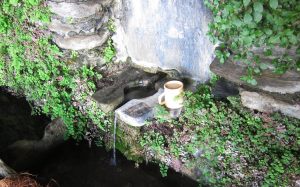
by Irma Havlicek
Web Content Developer
I was walking up the hill from Zagora with Beatrice McLoughlin one day when she mentioned that there was a spring not far off the path, and would I like to see it?
Well, sure I did, so off we went. It says a lot about the people’s hospitality here that there is a mug at the spring so that wayfarers can refresh themselves on their travels.
I tasted the water – it really is crystal clear and pure. Delicious.
Here are some photos of the spring.
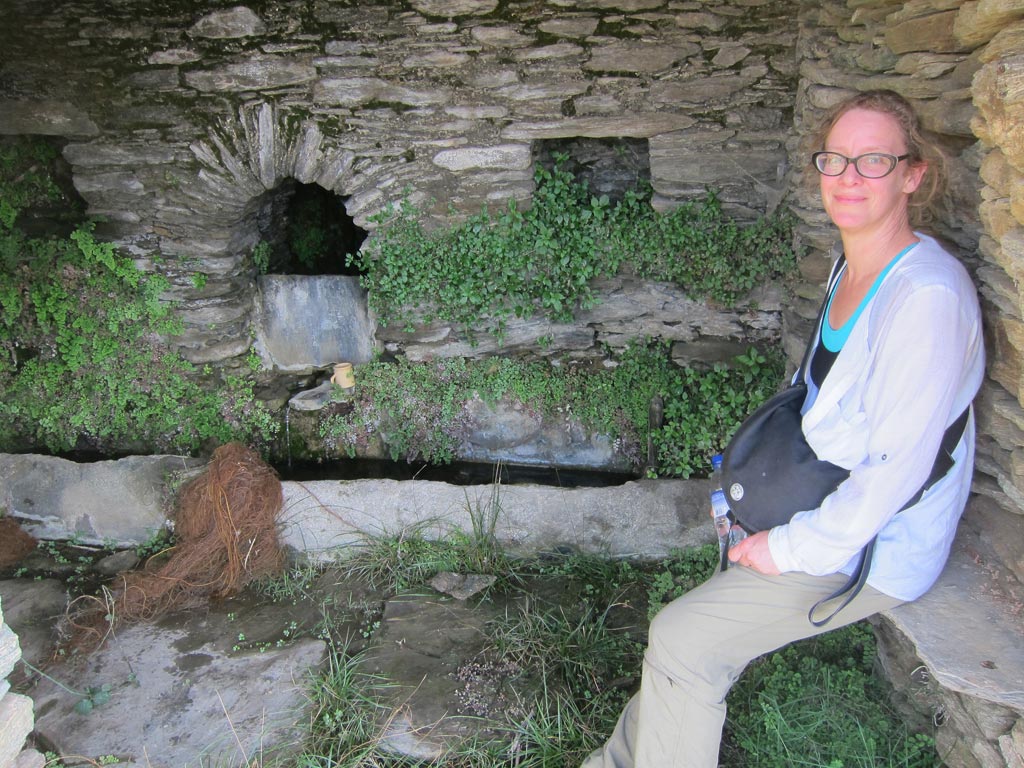
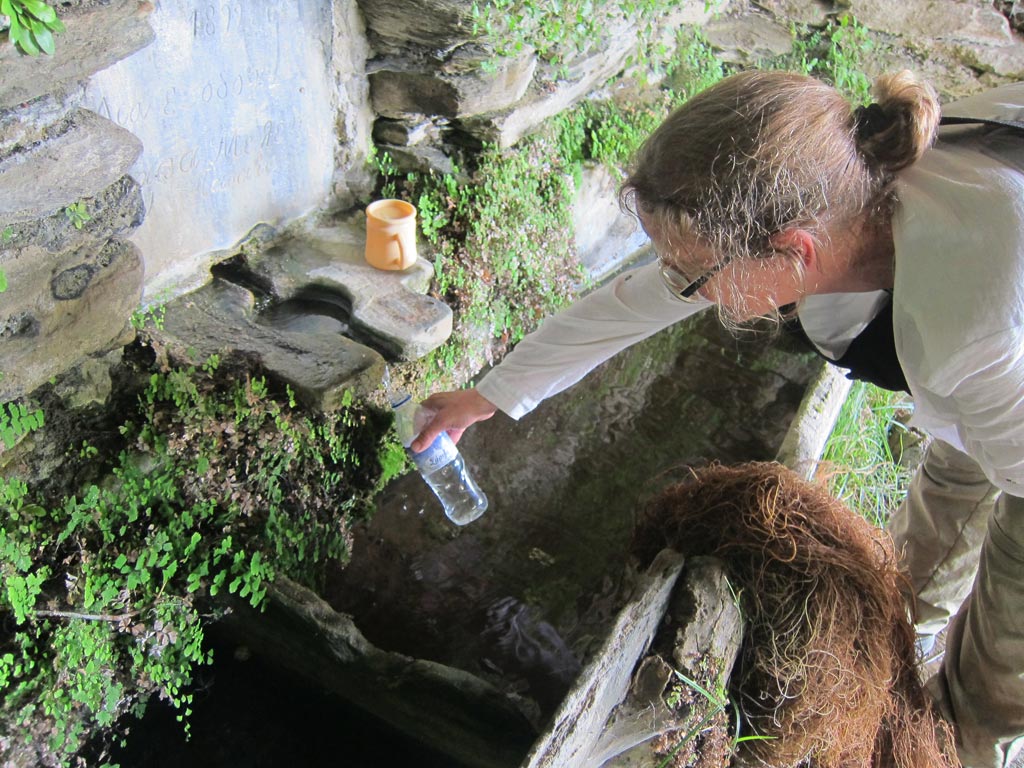
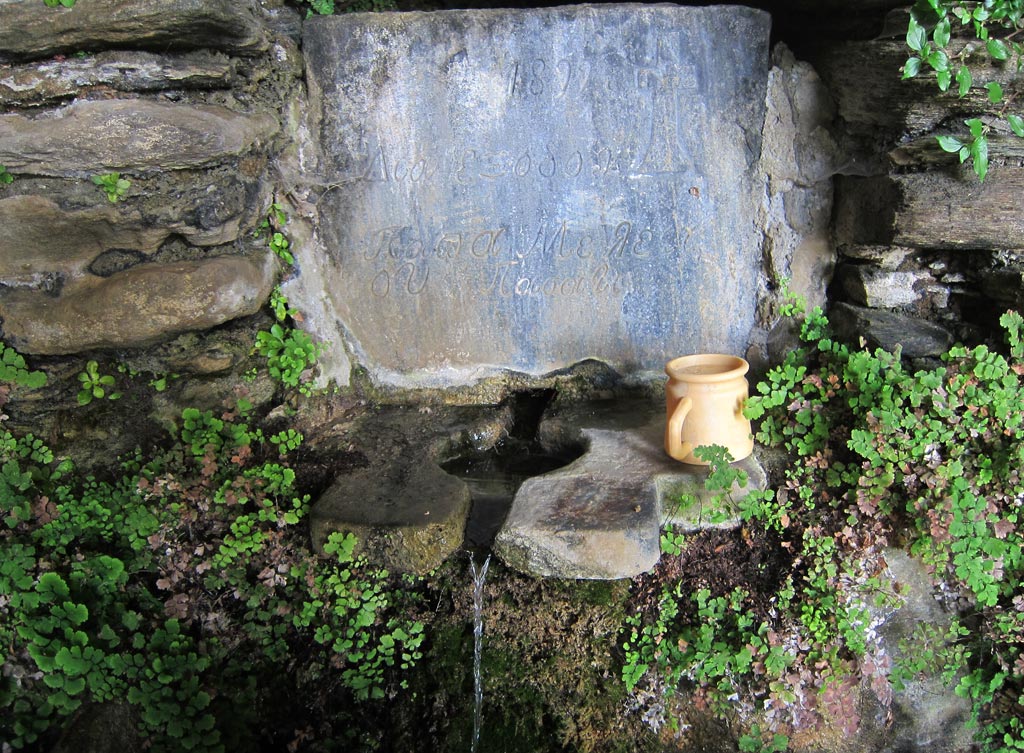
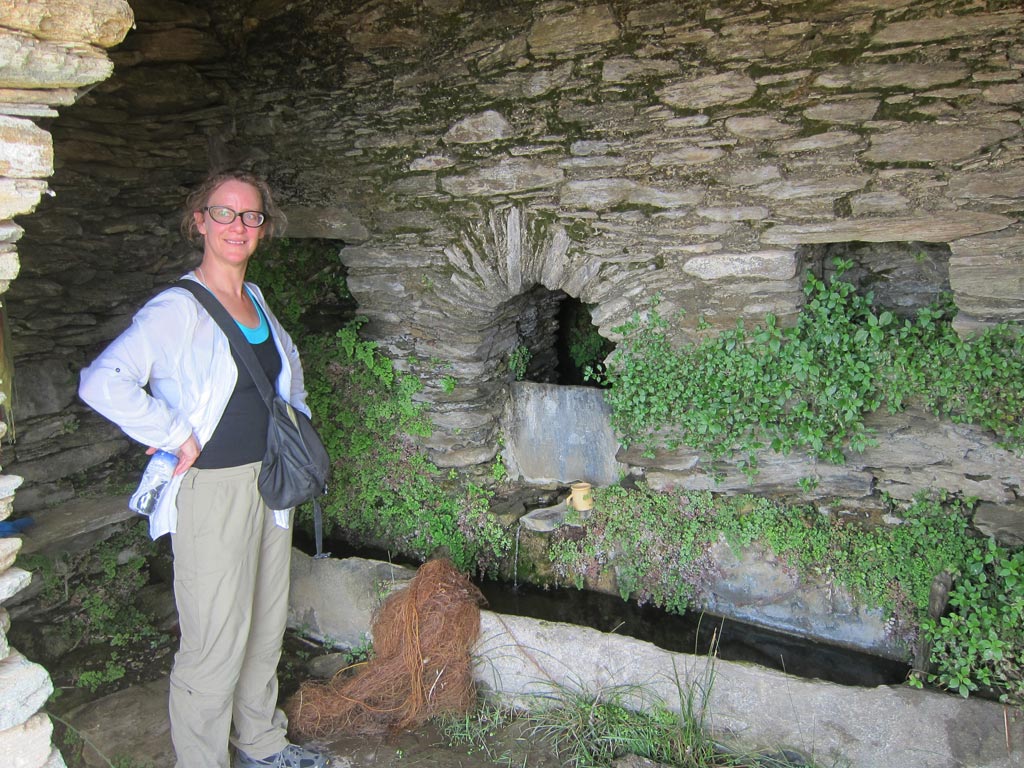


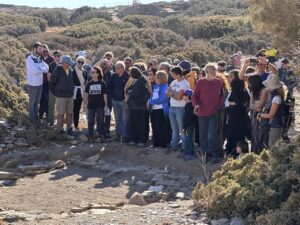
10 thoughts on “Pure water spring near Zagora”
Nice story – the insect was probably a violet carpenter bee (Xylocopa violacea) – it’s one of the largest bees in Europe. They’re solitary and lay eggs in dead wood – for example in the bamboo of the sun umbrellas on Batsi beach, where they scare the life out of people as they fly past! I wonder if the inhabitants of Zagora used that spring….?
Thanks, Malcolm – good to know. I saw a long thin black snake when walking up along the path recently. It had repeated white criss-cross line markings along its length. It was about a metre-and-a-half or more long. I googled it and saw one image which had it marked as a viper but it didn’t look to be from an authoritative source. And I thought vipers were not as long as that. I think that snake was more afraid of me than I was of it for it wriggled away very fast. For which I was grateful! Do you have any idea what that snake was? I’m glad we’re heading for their hibernation time now.
Hi Irma; There are 23 species of snake in Greece, seven of them venomous. The markings tend to be very variable, even within a species, but I think your snake was probably a Leopard snake, Zamenis situla, which I know occurs on Andros. It can grow to quite a length and occurs in striped and spotted forms. It’s harmless! Cheers; Malcolm
Hi Malcolm – thanks for that. I looked up photos of the snake you suggested but the colours and patterns in the images didn’t really match up with what I saw. I’d like to believe it was Zamenis situla though because I particularly liked your description of the snake as ‘harmless’. I appreciate your advice though, as always. Cheers, Irma
Could have been a big Adder, those are dangerous and snakes like to hang around the wet places on Andros. Btw have you been to the Lion head fountains on the island?
Oh and the legend has it that once someone tastes the waters of Andros they will always return 😉
I’m sure we all hope that’s true!
Thanks for that, Mark (sort of…. I’d rather think of it as a harmless Leopard Snake though).
The snake that looks closes to the one I saw (long, thin and black with white criss-cross markings) that I’ve found on the web is here – http://www.foxysislandwalks.com/Andros/Andros_Viper.jpg – where it is named a viper.
We went to the Menites Pork Festival last year and saw the lovely lion head fountain there. I wrote a post about it in the ‘About Andros’ section of the blog. Cheers, Irma
The text on the plaque seems to be ‘di exodwn papa Meletiou Pasal..’ which means that a father Meletios Pasal?? paid the expenses for the spring. I cannot read the whole name though.
Thanks a lot, Lynda. I will add that to the caption.